Working professionals
Domains
Doctorate
Artificial Intelligence
Data Science
Gen AI & Agentic AI
MBA
Marketing
Management
Education
Project Management
Machine Learning
Doctorate
For All Domains
IIITB & IIM, Udaipur
Chief Technology Officer & AI Leadership ProgrammeSwiss School of Business and Management
Global Doctor of Business Administration from SSBMEdgewood University
Doctorate in Business Administration by Edgewood UniversityGolden Gate University
Doctor of Business Administration From Golden Gate UniversityRushford Business School
Doctor of Business Administration from Rushford Business School, SwitzerlandGolden Gate University
Master + Doctor of Business Administration (MBA+DBA)Leadership / AI
Golden Gate University
DBA in Emerging Technologies with Concentration in Generative AIGolden Gate University
DBA in Digital Leadership from Golden Gate University, San FranciscoArtificial Intelligence
Degree / Exec. PG
IIIT Bangalore
Executive Diploma in Machine Learning and AIOPJ Global University
Master’s Degree in Artificial Intelligence and Data ScienceLiverpool John Moores University
Master of Science in Machine Learning & AIGolden Gate University
DBA in Emerging Technologies with Concentration in Generative AIExecutive Certificate
IIITB & IIM, Udaipur
Chief Technology Officer & AI Leadership ProgrammeIIIT Bangalore
Executive Programme in Generative AI for LeadersupGrad | Microsoft
Gen AI Foundations Certificate Program from MicrosoftupGrad | Microsoft
Gen AI Mastery Certificate for Data AnalysisupGrad | Microsoft
Gen AI Mastery Certificate for Software DevelopmentupGrad | Microsoft
Gen AI Mastery Certificate for Managerial ExcellenceOffline Bootcamps
upGrad
Data Science and AI-MLData Science
Degree / Exec. PG
O.P Jindal Global University
Master’s Degree in Artificial Intelligence and Data ScienceIIIT Bangalore
Executive Diploma in Data Science & AILiverpool John Moores University
Master of Science in Data ScienceExecutive Certificate
upGrad | Microsoft
Gen AI Foundations Certificate Program from MicrosoftupGrad | Microsoft
Gen AI Mastery Certificate for Data AnalysisupGrad | Microsoft
Gen AI Mastery Certificate for Software DevelopmentupGrad | Microsoft
Gen AI Mastery Certificate for Managerial ExcellenceupGrad | Microsoft
Gen AI Mastery Certificate for Content CreationOffline Bootcamps
upGrad
Data Science and AI-MLupGrad
Data AnalyticsGen AI & Agentic AI
Gen AI & Agentic AI
Masters

Paris School of Business
Master of Science in Business Management and TechnologyO.P.Jindal Global University
MBA (with Career Acceleration Program by upGrad)Edgewood University
MBA from Edgewood UniversityO.P.Jindal Global University
MBA from O.P.Jindal Global UniversityGolden Gate University
Master + Doctor of Business Administration (MBA+DBA)Executive Certificate
IMT, Ghaziabad
Advanced General Management ProgramMarketing
Executive Certificate
upGrad | Microsoft
Gen AI Foundations Certificate Program from MicrosoftupGrad | Microsoft
Gen AI Mastery Certificate for Content CreationOffline Bootcamps
upGrad
Digital MarketingManagement
Degree
O.P Jindal Global University
MSc in International Accounting & Finance (ACCA integrated)
Paris School of Business
Master of Science in Business Management and TechnologyGolden Gate University
Master of Arts in Industrial-Organizational PsychologyExecutive Certificate
Education
Education
Northeastern University
Master of Education (M.Ed.) from Northeastern UniversityEdgewood University
Doctor of Education (Ed.D.)Edgewood University
Master of Education (M.Ed.) from Edgewood UniversityProject Management
Certification
Knowledgehut
Leadership And Communications In ProjectsKnowledgehut
Microsoft Project 2007/2010Knowledgehut
Financial Management For Project ManagersKnowledgehut
Fundamentals of Earned Value Management (EVM)Knowledgehut
Fundamentals of Portfolio ManagementKnowledgehut
Fundamentals of Program Management-35c169da468a4cc481c6a8505a74826d.webp&w=128&q=75)
Knowledgehut
CAPM® CertificationsKnowledgehut
Microsoft® Project 2016Certifications & Trainings
-7f4b4f34e09d42bfa73b58f4a230cffa.webp&w=128&q=75)
Knowledgehut
PMP® Certification-7f4b4f34e09d42bfa73b58f4a230cffa.webp&w=128&q=75)
Knowledgehut
PMI-RMP® Certification-7f4b4f34e09d42bfa73b58f4a230cffa.webp&w=128&q=75)
Knowledgehut
PMP Renewal Learning PathKnowledgehut
Oracle Primavera P6 V18.8Knowledgehut
Microsoft® Project 2013-7f4b4f34e09d42bfa73b58f4a230cffa.webp&w=128&q=75)
Knowledgehut
PfMP® Certification CourseKnowledgehut
Project Planning and MonitoringPrince2 Certifications
Knowledgehut
PRINCE2® FoundationKnowledgehut
PRINCE2® PractitionerKnowledgehut
PRINCE2 Agile Foundation and PractitionerKnowledgehut
PRINCE2 Agile® Foundation CertificationKnowledgehut
PRINCE2 Agile® Practitioner CertificationManagement Certifications
-7f4b4f34e09d42bfa73b58f4a230cffa.webp&w=128&q=75)
Knowledgehut
Project Management Masters Certification ProgramKnowledgehut
Change ManagementKnowledgehut
Project Management TechniquesKnowledgehut
Product Management Certification ProgramKnowledgehut
Project Risk ManagementMachine Learning
Machine Learning
Fresh graduates
Domains
Data Science
Management
Marketing
Data Science
Bootcamp
Offline Bootcamps
upGrad
Data Science and AI-MLupGrad
Data AnalyticsManagement
Marketing
Bootcamp
upGrad Campus
Advanced Certificate in Performance MarketingOffline Bootcamps
upGrad
Digital Marketing- Study abroad
- Offline centres
More
RESOURCES
BlogsCutting-edge insights on education
WebinarsLive sessions with industry experts
TutorialsMaster skills with expert guidance
Learning GuideResources for learning and growth
COMPANY
Careers at upGradYour path to educational impact
Hire from upGradTop talent, ready to excel
upGrad for BusinessSkill. Shape. Scale.
Experience centerImmersive learning hubs
About usOur vision for education
OTHERS
Refer and earnShare knowledge, get rewarded
Linear Regression Online
Linear regression is a fundamental and extensively used type of predictive analysis. Learn Linear Regression Programs from the World’s Top Universities.
-80f5aca04e9b49ca9902fe2806c12f6e%20(1)-05c9b5b2614c40b681f04c3275487b40.jpeg&w=3840&q=75)
Overview of Learning Linear Regression Courses with upGrad
Linear Regression plays a key role in predictive analytics. No matter if you are predicting trends, developing insights into consumer behavior, or informing business decisions, Linear Regression has become a fundamental skill in the data-intensive world in which we live.
upGrad’s Linear Regression programs provide practical experience in creating, interpreting, and assessing regression models under the mentorship of experts from the industry. upGrad’s popular data science courses, including online linear regression courses, are practical; you don’t just learn the theory, but learn how to apply it.
Why Learning Linear Regression is Crucial in 2025
- Powers key predictive models used in business, healthcare, and finance
- Forms the foundation of more advanced machine learning techniques
- Helps professionals make data-driven decisions with confidence
- In high demand across industries, hiring for Data Analyst and Data Scientist role
- Enhances your resume and sets you apart in competitive job markets
Who Should Take Linear Regression Online Courses
- Beginners exploring the field of data science or analytics
- Students looking to build a strong foundation in statistics and modeling
- Working professionals aiming to upskill in predictive analytics
- Career switchers wanting to enter the data-driven tech world
- Anyone curious about how numbers turn into insights
What Will You Learn in upGrad’s Linear Regression Online Courses?
upGrad offers a broad variety of data science online courses, aiming to provide the skills that are highly sought after in the industry, such as linear regression, one of the fundamental methods in predictive analytics.
If you are pursuing a full degree course or exploring free data science courses, you can be assured that upGrad offers practical training in linear regression during the course.
Among the highly rated programs that include courses on linear regression are:
- MS in Data Science from O.P. Jindal Global University
- MS in Data Science from Liverpool John Moores University (LJMU)
- Executive Diploma in Data Science from IIIT Bangalore
- Linear Regression Free Course from upGrad
Topics You’ll Learn in Linear Regression Courses from upGrad:
upGrad courses cover the following key subjects to help you become proficient in linear regression:
- The Linear Regression Model: Familiarize yourself with the linear regression equation for modeling the relationship between predictor variables and an outcome variable that is continuous, and learn how to make accurate predictions.
- Forms of Linear Regression: Investigate forms including Simple Linear Regression and Multiple Linear Regression, which address one or more predictor variables.
- Steps to construct the linear regression algorithm: Get familiarized with how to construct a linear regression model from the pre-processing of data to the application of the most common procedure to train this model, the least squares method.
- Assumptions of Linear Regression: Learn what important linear regression assumptions such as linearity, independence, and homoscedasticity are and how to test them with actual data.
- Interpreting Regression Coefficients: Understanding the meaning and implications of regression coefficients, that is, the nature of the impact that predictors have on the target variable.
- Least Squares Regression Line (LSRL): Understand the Least Squares Regression Line, which is the basis for linear regression and the focus of the “least squares” process that reduces errors of prediction.
- Ordinary Least Squares (OLS) Method: Learn to apply the approach of Ordinary Least Squares, which is the most widely used technique for estimating the coefficients of a linear regression model.
Data Science Course Instructors
Learn From The Best
Learn Data Science fundamentals from expert instructors who help you excel in your careers by imparting cutting-edge analytics and machine learning skills.
8
Instructors
10
Industry Experts

Dr. Atif Waraich

Faculty - Computer Science
A Senior faculty of Engineering and Technology at LJMU who has multiple publications in the health care domain

Chandrashekar Ramanathan

Dean Academics
Prof. Chandrashekar has a PhD from Mississippi State University and experience of over 10 years in several multinational organisations.

Prof. G. Srinivasaraghavan

Professor
Prof. Srinivasaraghavan has a PhD in Computer Science from IIT-K and 18 years of experience with Infosys and several other MNCs.

Tricha Anjali

Ex-Associate Dean
Prof. Anjali has a PhD from Georgia Institute of Technology as well as an integrated MTech (EE) from IIT Bombay.

Debabrata Das

Director, IIITB
Dr. Debabrata Das is Director of IIITB. He has received his PhD from IIT-KGP. His main areas of research are IoT and Wireless Access Network

Prof. Dhiya Al-Jumeily

Professor - Artificial Intelligence
A senior member of the IEEE and a chartered IT Professional, he is a fellow of the UK Higher Education ACademy

Prof. Paulo Lisboa

Head of Dept - Applied Mathematics
Studied mathematical physics at LU and was the chairman of Industrial Mathematics at KMJU in 1996 and Head of Graduate School in 2002

Dr. Gabriela Czanner

Faculty - Engineering and Technology
A Senior lecturer at Department of Applied Mathematics at LJMU. Her research focus is advanced statistics for decision support

Rajesh Sabapathy

Sr Director, Data Science
Rajesh has 10+ years of experience leading Data Science teams in various domains solving complex problems using Deep Learning & ML technique

Sajan Kedia

Ex- Data Science Lead
Sajan graduated from IIT, BHU and has tons of experience in Data Science, Big Data, Spark, Machine Learning and Natural Language Processing

Anshuman Gupta

Director, Data Science
He has a Ph.D (Dual) from Penn State University as well as a B.Tech. Degree from IIT Bombay

Mirza Rahim Baig

Lead Analyst
Advanced analytics professional with 8+ years of experience as a consultant in the e-commerce and healthcare domains.

Bijoy Kumar Khandelwal

COO, Actify
Bijoy comes with a deep understanding of the private and cloud architectures and has helped numerous companies make the transition

Kautuk Pandey

Lead Data Engineer
Kautuk has 10+ years of experience working in Data Science. He is a seasoned professional in Big Data, AWS, Pyspark and other technologies

Ujjyaini Mitra

Head of Analytics
An alumnus of McKinsey and Co, Flipkart and Bharati Airtel with over 11 years of experience

Ankit Jain

ML Engineering Manager
An alumnus of IIT Bombay, UCB, and HBS with over 9 years of experience. Ankit has been recognised as 40Under40 Data Scientist for 2022

S. Anand
-39a9e7a7278a441ea08a60a1f45b4913.png&w=128&q=75)
CEO
An alumnus of IIT Madras, IIM Bangalore and LBS London, Anand is among the top 10 data scientists in India with 20 years of experience

Behzad Ahmadi

Data Scientist
An M. Tech graduate and PhD from Jersey Institute of Technology, Behzad possesses tremendous years of experience in Data Science and ML
Data Science Projects
Learn by Doing
Our data science online certification programs have projects to apply theoretical knowledge in practical scenarios, helps you to tackle real-world problems.
16+
Industry projects to choose from
In this assignment, you will work for a consumer finance company which specialises in lending various types of loans to urban customers and use EDA to analyse the patterns present in the data. This will ensure that the applicants are capable of repaying the loan are not rejected.
Data Visualisation
Data Analysis
Data Interpretation
Credit EDA Assignment
In this assignment, you will work for a consumer finance company which specialises in lending various types of loans to urban customers and use EDA to… Know More
Skills learned
Data Cleaning
Data Visualisation
Data Analysis
Data Interpretation
MySQL Queries
Data Manipulation
Data Analysis
RSVP Case Study
In this assignment, you will work on a movies dataset using SQL to extract exciting insights about popular films and the factors that drive a film.
Skills learned
MySQL
MySQL Queries
Data Manipulation
Data Analysis
ML Modelling
Model Evaluation
Bike Sharing Assignment
Build a regression model to understand the factors on which the demand for bike sharing systems vary on and help a company optimise its revenue.
Skills learned
Linear Regression
ML Modelling
Model Evaluation
In this case study, the company requires you to build a machine learning classification model wherein using some demographics and behavioral data of the leads (potential buyers), it will be able to identify the ones most likely to convert.
Decision Trees
Classification
ML Modelling
Model Evaluation
Business Problem Solving
Lead Scoring Case Study
In this case study, the company requires you to build a machine learning classification model wherein using some demographics and behavioral data of t… Know More
Skills learned
Logistic Regression
Decision Trees
Classification
ML Modelling
Model Evaluation
Business Problem Solving
Telecom companies often face the problem of churning customers due to the competitive nature of the industry. Help a telecom company identify customers that are likely to churn and make data-driven strategies to retain them from the perspective of a business analyst.
Tree Models
Model Selection
Feature Engineering
Classification
ML Modelling
Model Evaluation
Business Problem Solving
Model Selection Case Study - Telecom Churn
Telecom companies often face the problem of churning customers due to the competitive nature of the industry. Help a telecom company identify customer… Know More
Skills learned
Logistic Regression
Tree Models
Model Selection
Feature Engineering
Classification
ML Modelling
Model Evaluation
Business Problem Solving
Telecom companies often face the problem of churning customers due to the competitive nature of the industry. Help a telecom company identify customers that are likely to churn and make data-driven strategies to retain them from the perspective of a data scientist.
Tree Models
Boosting
Model Selection
Regularization
Feature Engineering
Classification
ML Modelling
Model Evaluation
Business Problem Solving
Advanced ML Case Study - Telecom Churn
Telecom companies often face the problem of churning customers due to the competitive nature of the industry. Help a telecom company identify customer… Know More
Skills learned
Logistic Regression
Tree Models
Boosting
Model Selection
Regularization
Feature Engineering
Classification
ML Modelling
Model Evaluation
Business Problem Solving
Lexical Processing
Regex
POS Tagging
Dependency Parsing
Syntactic Processing Assignment
Use the techniques such as POS tagging and Dependency parsing to extract information from unstructured text data.
Skills learned
Natural Language Processing
Lexical Processing
Regex
POS Tagging
Dependency Parsing
Sqoop
Redshift
Spark
ETL Pipeline
ETL Project
Make use of Sqoop, Redshift & Spark to design an ETL data pipeline.
Skills learned
AWS
Sqoop
Redshift
Spark
ETL Pipeline
Analyse movie data from the past 100 years and find out various insights to determine what makes a movie do well. Use data manipulation, slicing, and various other dataframe operations to successfully find usable insights from the movies.
Data Processing
Data Visualisation
Data Analysis
Dashboarding
Data Storytelling
IPL Visualization Assignment
Analyse movie data from the past 100 years and find out various insights to determine what makes a movie do well. Use data manipulation, slicing, and … Know More
Skills learned
Tableau/Power BI
Data Processing
Data Visualisation
Data Analysis
Dashboarding
Data Storytelling
Linear Regression
ML Model Evaluation
Advanced Regression
Build a regularized regression model to understand the most important variables to predict
Skills learned
ML Modeling
Linear Regression
ML Model Evaluation
Hadoop
MapReduce Programming
mrjob
Linux
Sqoop
Apache HBase
SQL
MapReduce Programming Assignment
Perform MapReduce Programming in a big data environment on a large dataset.
Skills learned
AWS
Hadoop
MapReduce Programming
mrjob
Linux
Sqoop
Apache HBase
SQL
Big Data with Spark
PySpark
Big Data Case Study
Understand how a big data project in the industry is taken up and solved through a comprehensive big data case study on cloud.
Skills learned
AWS
Big Data with Spark
PySpark
Python
Data Analysis
SQL & Python Lab
Solve intensive programming questions in a competitive lab environment to showcase and evaluate your SQL and Python coding skills.
Skills learned
SQL
Python
Data Analysis
Understand the factors that drive the Airbnb business and help the team leads tackle problems and bottlenecks through extensive data analysis on UI tools.
Data Storytelling techniques
Data Visualisation
Tableau
Airbnb Case Study
Understand the factors that drive the Airbnb business and help the team leads tackle problems and bottlenecks through extensive data analysis on UI to… Know More
Skills learned
Data Analysis
Data Storytelling techniques
Data Visualisation
Tableau
Spark
Spark Streaming
Apache Kafka
Retail Project
Build an end-to-end real-time data processing application using Spark Streaming and Kafka.
Skills learned
AWS
Spark
Spark Streaming
Apache Kafka
Domain understanding
Data Analysis
Business Case Study
Understand how data projects are taken up in the industry and implement the steps required to successfully manage and complete a data project.
Skills learned
Business Problem Solving
Domain understanding
Data Analysis
In this assignment, you will build a complete neural network using Numpy. You will implement all the steps required to build a network - feedforward, loss computation, backpropagation, weight updates etc. You will use the MNIST dataset to train your model to classify handwritten digits between 0-9.
Neural Networks
PyTorch
NN Assignment
In this assignment, you will build a complete neural network using Numpy. You will implement all the steps required to build a network - feedforward, … Know More
Skills learned
Deep Learning
Neural Networks
PyTorch
Career Paths After Completing a Linear Regression Course
After gaining top skills in a Linear Regression Course, you’ll be equipped to explore high-demand roles across the data ecosystem. Completing the Linear Regression course qualifies you for many data and analytics positions. If you are just beginning or ready to take your next step in your career, the career roles given below allow you to engage your talents in meaningful, applied work.
Here are some popular career paths you can apply for:
- Data Analyst – ₹4 to ₹9 LPA
- Business Analyst – ₹6 to ₹13 LPA
- Data Scientist – ₹7 to ₹17 LPA
- Data Engineer – ₹6 to ₹14 LPA
- Product Analyst – ₹8 to ₹16 LPA
- Analytics Consultant – ₹11 to ₹18 LPA
- Statistician: ₹3 to ₹8 LPA
- Quantitative Analyst (Quant): ₹12.5 - 24 LPA
Source: Glassdoor
Placements in Data Science Courses
Our Placement Numbers
Excel in data-driven careers with our certification in Data Science, boasting a high rate of successful student placements. Get hired by top companies.
Top Recruiters












Success Stories
What Our Learners Have To Say
upGrad's student mentor played a very importany role in my learning journey
upGrad's student mentors played a crucial part in my learning journey. I followed them and they helped a lot in clarifying my queries related to my online data science course. They also gave me placement assistance as a part of my data science course, where they perfectly guide you on how to start a career as a Data Analyst.

Abhinay Bandaru
Product Analyst, Head Infotech
3 Years of Experience
The upGrad's placement drive helped me to secure a job in MNC
My online data science course's content was so well-structured that it helped me grasp concepts that were entirely new to me. Thanks to upGrad's placement drive, I was able to secure a job at Kantar Analytics.

Bhagvathi
Data Analyst, Kantar
1 Year of Experience
Additional benifits of upGrad helped a lot in terms of gaining practical exposure
upGrad's online data science courses are truly amazing. The mentorship through industry veterans, BaseCamps, and student mentors makes the programme extremely engaging. I Would definitely endorse the data science programme for its rich content and comprehensive approach to Data Science.

Moulik Srivastava
Technology Project Manager & Commercial Strategy Associate, Victory Farms
5 Years of Experience
Being online, it was like a university experience
Learning with upGrad for my data science course was like going back to University for me. Their data science certification, career support and mentorship calls really helped me switch to a career in the field of Data Science.

Atul Agarwal
Data Scientist, Scaler
7 Years of Experience
Structured and easy curriculumn
The curriculum of the data science online course is very structured and easy to consume. The mock calls and encouraging words from the CEO before my interview were extremely encouraging. One of the best online data science course there is in the market

Aishwarya Ramachandran
News Analyst, Thomson Reuters
6 Years of Experience
Data Science Free Courses
Start Learning For Free
Begin your Data Science journey with our free introduction to data analytics courses, a perfect starting point for analytical upskilling.

Free Certificate
Artificial Intelligence in the Real World
This free AI course delves into AI's diverse industry applications, providing insights into its pivotal role across various sectors.
7 Hours

Free Certificate
Case Study using Tableau, Python and SQL
This course will help you apply your knowledge in SQL, Python and Tableau to come up with a business solution for the churn problem faced by businesses.
10 Hours

Free Certificate
Introduction to Tableau
Learn how you can transform data into actionable insights by conducting data analysis and visualise it using various chart types in Tableau
8 Hours

Free Certificate
Data Science in E-commerce
Learn about price optimisation, market mix modelling, A/B testing and other key skills used to make data-driven decisions in the E-commerce sector
13 Hours

Free Certificate
Introduction to Natural Language Processing
Uncover the basics of NLP and other topics like RegEx for building tools for Spam Detection, Phonetic Hashing and Spell Correction in this introductory course
11 Hours

Free Certificate
Fundamentals of Deep Learning of Neural Networks
Learn about cutting-edge ML models like Artificial Neural Networks or ANNs and various other concepts related to Deep Neural Network in this beginner-friendly course
28 Hours

Free Certificate
Linear Algebra for Analysis
Learn about vectors, linear transformations, matrices, eigenvalues and eigenvectors in Linear Algebra as you build a solid foundation for analytics with this course
5 Hours

Free Certificate
Advanced SQL: Functions and Formulas
Improve your understanding of SQL as you learn about window functions, partitioning, query optimisation, case statements, stored functions & more in this course
11 Hours

Free Certificate
Introduction to Database Design with MySQL
Learn all about database design and the basics of MySQL using MySQL Workbench in this beginner-friendly course
8 Hours

Free Certificate
Hypothesis Testing Crash Course
Learn about the various types of hypotheses, Decision-making criteria, critical value and p-value methods for testing Hypothesis.
11 Hours

Free Certificate
Basics of Inferential Statistics
This data analytics course will help you learn how to use a random sample data to describe and make inference about the population.
15 Hours

Free Certificate
Unsupervised Learning: Clustering
Learn the fundamentals of clustering in unsupervised learning as you introduce yourself to Clustering, K-Means Clustering Hierarchical Clustering, and its execution
11 Hours
-f76598bd0be347138a7a742ac19fa7bc.webp&w=3840&q=75)
Free Certificate
Logistic Regression for Beginners
The course covers the concept of Logistic Regression and its applications in the industry.
17 Hours

Free Certificate
Linear Regression - Step by Step Guide
Learn the basics of simple and multiple linear regression, and their relevance in various industries.
21 Hours

Free Certificate
Learn Python Libraries: NumPy, Matplotlib and Pandas
Learn about the three most important and popular Python libraries for handling data: NumPy, Matplotlib and Pandas.
15 Hours

Free Certificate
Learn Basic Python Programming
Solve coding questions based on Lists, Strings and other data structures like tuples, sets and dictionary to improve your problem solving abilities with Python
12 Hours

Free Certificate
Programming with Python: Introduction for Beginners
Learn about control statements, basic data structures, and OOP concepts in Python programming with this beginner-friendly course
13 Hours

Free Certificate
Exploratory Data Analysis in Excel
Learn to formulate key business strategies, optimise resources and take key decisions to solve any business problem in this introductory course
15 Hours

Free Certificate
Analyzing Patterns in Data and Storytelling
Learn the real-world applications of data analytics by analysing data patterns, documenting insights, and visualising data to tell a story
6 Hours

Free Certificate
Introduction to Data Analysis using Excel
This beginner-friendly course will help you in develop skills required to analyse large datasets and generate business relevant insights using Excel
9 Hours
Data Science Videos
You Might Like To Watch
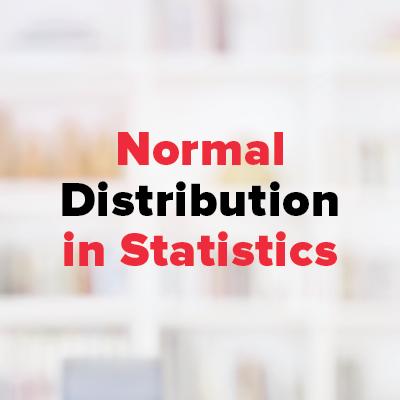

Normal Distribution in Statistics | Data Science Tutorial | upGrad
1:08:40
74,891 views
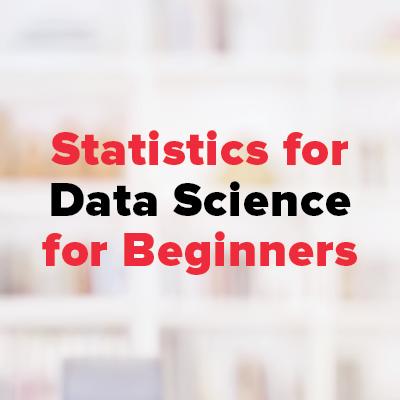

Statistics for Data Science for Beginners | Statistics Tutorial | upGrad
1:25:28
7,526 views
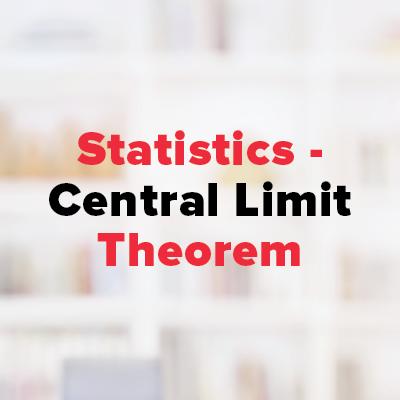

Statistics - Central Limit Theorem | Statistics Tutorial | upGrad
1:05:56
995 views
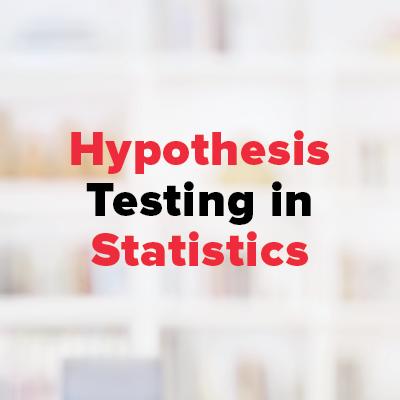

Hypothesis Testing in Statistics | Null & Alternative Hypothesis | Statistics Tutorial | upGrad
1:32:35
842 views
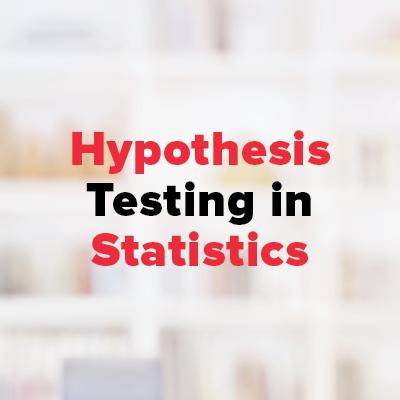

Hypothesis Testing in Statistics | Problems on Central Limit Theorem | Statistics Tutorial | upGrad
1:34:18
739 views


MySQL Tutorial 01 | What is Data Warehousing?
7:37
856 views
Data Science Blogs
You Might Like To Read

Read this guide to learn 42 exciting Python project ideas for beginners that answer some of the most frequently asked queries regarding Python projects.

Rohit Sharma
-98e41100725448ef90d7da58ec3c852a.webp&w=828&q=75)
Check out this guide on the 13 Interesting Data Structure Project Ideas and Topics For Beginners and learn how to implement the knowledge of data structures in developing amazing beginner projects.

Rohit Sharma

Learn Excel for free with our online course in 2023 and earn a valuable certification. Master essential Excel skills from home and boost your career today!

Nitin Gurmukhani
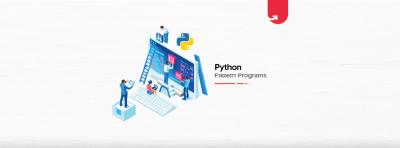
We’ve sorted a list of multiple ideas for pattern printing in Python to start your preparations with multiple kinds of Python pattern programs in this list

Rohit Sharma

Check out this guide on List vs Tuple where you will learn the most significant differences between these two Python data structures. This guide will provide you a deep insight into the list and tuples in Python.

Rohit Sharma
Learner Support and Services
How Will upGrad Supports You
Receive unparalleled guidance from industry mentors, teaching assistants, and graders
Receive one-on-one feedback from our seasoned data science faculty on submissions and personalized feedback to improvement
Our Data Science Syllabus is designed to provide you with ample of industry relevant knowledge with examples
You can write to us via studentsupport@upgrad.com or for urgent queries use the " Talk to Us" option on the learning platform
We are always there to support our online data science course learners on demand.
Timely doubt resolution by industry experts and your data science course peers
100% expert verified responses to ensure quality learning for all data science courses.
Personalized expert feedback on all the online data science course assignments and projects
Regular live sessions for our online data science students by experts to clarify concept-related doubts
Why Choose upGrad for Linear Regression Online Courses?
Looking to become a data scientist and want to learn linear regression? upGrad’s linear regression course is part of its complete, industry-aligned online data science courses, which are meant to equip you with the real-world skills you need to get a job. Below are the reasons why upGrad can be a good option even when other data science courses come with different data science course fees and syllabi.
Feature/Criteria | upGrad | Other Institutes |
Course Structure | In-depth linear regression course as part of a comprehensive data science course syllabus | Mostly surface-level concepts, often lacking practical applications |
University Collaborations | Partnered with top institutions like IIIT Bangalore, LJMU, and O.P. Jindal | Limited or local university tie-ups with lesser-known credibility |
Certifications | Globally recognized certificates in data science and machine learning, useful for career advancement | Basic certifications with limited professional recognition |
Industry Projects | Real-world projects on least squares regression, model evaluation, and prediction use cases | Fewer practical projects; mostly theory or outdated datasets |
Career Support | Personal mentorship, resume building, and placement support, ideal for job-ready skills | Minimal or no structured career support post-completion |
Tools & Languages | Hands-on with Python, R, SQL, and libraries like scikit-learn for regression modeling | Often tool-limited; may focus mainly on Excel or manual methods |
Faculty Expertise | Taught by a mix of top academicians and real-world data science experts | Mainly academic-focused with limited industry exposure |
Learning Format | 100% online linear regression online course with flexible, self-paced learning | Fixed timing, less flexible for working professionals |
Specialization | Covers regression coefficients, the least squares method, OLS regression, model assumptions, and diagnostics | Limited to theory with no emphasis on real-world regression modeling |
Best For | Ideal for beginners, working professionals, and career switchers looking for a full-fledged data science online course | More suited for theory-based learners or classroom-style instruction |
Fees | Offers EMI options and value-driven pricing compared to data science course fees elsewhere | Either too expensive or low-cost with compromised quality |
Free Learning Options | Access to free data science courses and modules for beginners | Few or no free introductory lessons provided |
Frequently Asked Questions
1. What is linear regression?
Linear regression is a statistical method for modeling the relationship between an independent variable and a dependent variable. It's commonly applied in predictive analytics and serves as the foundation for numerous machine learning algorithms.
2. Why is it necessary to study linear regression?
Learning linear regression allows you to work with trends, forecasts, and create building blocks for a more advanced data science and machine learning career. It's one of the key things you learn in any linear regression course or data science online course.
3. What is the potential for career opportunities when you learn linear regression?
Taking a linear regression course can open the doors for work like Data Analyst, Machine Learning Engineer, Business Analyst, and Research Scientist, particularly in data-driven industries.
4. How will I be able to learn linear regression from taking online classes?
Online linear regression courses offer convenience and interactive learning with project-based hands-on work so that you can implement regression models on actual data sets without the requirement for a classroom environment.
5. What are the advantages of enrolling in an online Linear Regression course?
You receive organized content, instructor-guided courses, lifetime access to content, and instant feedback, all adjusted according to your pace. Most data science courses online feature linear regression as a major module.
6. What are the best linear regression courses for employee training and upskilling?
Courses provided by upGrad, which are part of complete data science courses, are best suited for team upskilling. They provide real-world implementation, flexible modes, and certification from well-known universities.
7. Are linear regression courses offers financial aid?
Yes, upGrad frequently offers financial assistance, EMI options, and scholarships to make it simpler to pursue quality linear regression training.
8. Do I get access to recorded lectures and course content?
Of course! Most online linear regression courses include lifetime video lecture access, downloadable content, and supporting reading materials.
9. What is the refund policy of these courses?
Refund policies differ across platforms.upGrad offers a clear refund policy, which is communicated at the time of enrollment for each data science or linear regression course.


upGrad Learner Support
Talk to our experts. We are available 7 days a week, 10 AM to 7 PM
Indian Nationals
Foreign Nationals
Disclaimer
The above statistics depend on various factors and individual results may vary. Past performance is no guarantee of future results.
The student assumes full responsibility for all expenses associated with visas, travel, & related costs. upGrad does not .






















-ae8d039bbd2a41318308f8d26b52ac8f.svg)

